LGBT End-of-Life Conversations
10 brief videos on an array of timly topics
Featuring Brian de Vries, PhD

The Amateur's Guide To Death & Dying
Enhancing Life Near Death

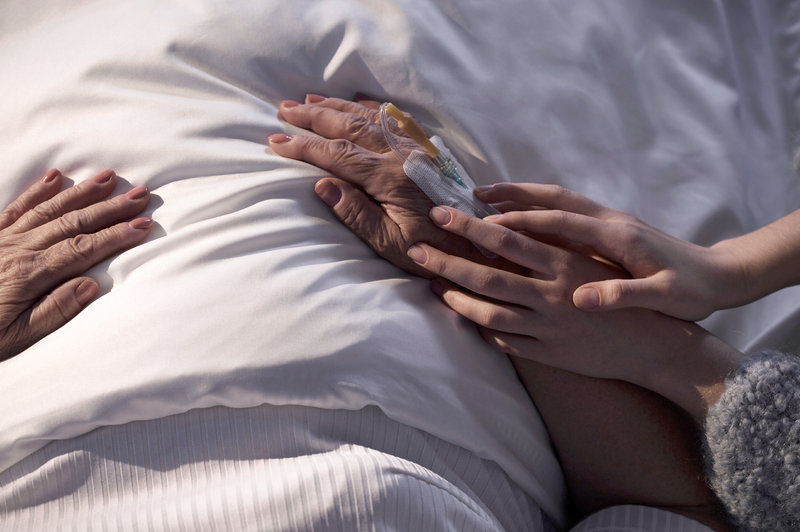
By Lynne Shallcross
When a family member of mine was dying of cancer, her husband’s boss told him to take all the time he needed to care for her. She was granted her wish of being at home when she left this earth, surrounded by those she loved most.
But a wide base of support is needed in order for a patient’s wish to die at home to be made real — including, in some cases, whether someone can take time off work to be with their loved one in their final days, a study finds.
Terminally ill cancer patients whose relatives took at least two weeks off work in the three months preceding their death had a greater likelihood of dying at home, compared with patients whose relatives took no more than three days off.
The study, which was published in BMC Medicine on Thursday, looked at the deaths of more than 350 cancer patients in London. Using feedback from those patients’ loved ones, researchers found that four factors could explain 91 percent of deaths that occurred at home: patient’s preference, relative’s preference, home palliative care or district/community nursing.
Having a comprehensive home-care plan in place is crucial, says lead author Barbara Gomes, a research fellow at the Cicely Saunders Institute of Palliative Care, Policy & Rehabilitation at King’s College London. That should include specialist palliative care services and the availability of around-the-clock nursing. The number of home doctor visits also increased a patient’s chances of dying at home.
But researchers also identified three factors that had been previously overlooked yet still weighed into whether a patient died at home: the length of time in which the family knew the patient’s illness was incurable; discussion of the patient’s preference with family; and the number of days family members took off work in the three months before the patient’s death.
There are a variety of possible explanations for the connection between relatives’ days off work and a loved one’s at-home death, but Gomes is careful to point out that this retrospective, observational study can’t draw a cause and effect on this point.
Some governments have recognized the importance of being with a loved one who is dying and have set up support programs to better facilitate family caregiving. Gomes points to a compassionate care benefit in Canada, which offers employees a paid employment insurance program if they need to care for a gravely ill loved one.
Only three states have paid family leave policies: California, New Jersey and Rhode Island. Both Washington, D.C., and the state of New York are considering paid family leave legislation, and the FAMILY Act was introduced in Congress this year with the goal of providing a national paid family and medical leave insurance program.
David Bolotsky, founder and CEO of the online marketplace and retailer UncommonGoods, provides his employees at the Brooklyn-based company with paid leave. Not all American workers are so lucky: Every company has a different policy and different leave benefits. Although many workers are eligible for the federal Family and Medical Leave Act to care for a child, parent or spouse with a serious health condition, that leave is unpaid, which can make it financially impossible.
Bolotsky argues for providing paid family leave to all employees, as he did recently in an op-ed in support of the New York bill. “For most of us, nothing is more important than our families,” he says. “The folks who raised us ought to be able to have a dignified passing, and being able to be there with your loved ones is really important.”
The British study also found that dying at home was more peaceful for the patient and led to less grief among their loved ones. And the people who died at home didn’t experience more pain than those who were in a hospital.
Though health care should ideally be patient-centered, Gomes says remembering the crucial role that relatives play in the decision-making process and in the actual caregiving is important.
She recommends that health care providers encourage the patient and loved ones to discuss preferences for where the terminally ill patient will die, as well as acknowledge that preferences may change as time goes on.
Providers should also help the patient and relatives become aware of the medical supports and services available to them, along with explaining that staying at home to die may not be medically feasible.
Complete Article HERE!

By Amy Berman
To: Centers for Medicare & Medicaid Services:
News reports say you will soon make a final decision about paying doctors and other providers who talk to their patients about end-of-life planning, I have a fatal form of breast cancer, and I’d like to tell you how such conversations have allowed me to survive, and live well, in the five years since my diagnosis.
I am a nurse, a nationally recognized expert in care of the aged and senior program officer at the John A. Hartford Foundation, which is devoted to improving the care of older people in the United States. Yet my perspective is not simply professional. For, you see, I live with Stage 4 (end-stage) inflammatory breast cancer. And while this metastatic cancer will one day kill me, the advanced-care planning conversations I have had with my health-care team have been lifesaving since my diagnosis.
I use the word “lifesaving” advisedly because that is what these conversations are truly about. When done well, they can shape care in ways that give people with serious illness a chance at getting the best life possible.
This kind of conversation initially helped my care team understand what was important to me and helped clarify my goals of care. Faced with an incurable disease and a prognosis where only 11 to 20 percent survive to five years and there is no statistic for 10-year survival because it so rarely happens, I came to understand that my priority was to seek a “Niagara Falls trajectory” — to feel as well as possible for as long as possible, until I quickly go over the precipice. Quality of life is more important to me than quantity of days, if they are miserable days.
Following a discussion with my oncologist (a conversation that would be reimbursed if you in fact move ahead and change your rules), we initially decided on a palliative regime to slow the cancer’s spread with the least amount of burdensome side effects. We would not impose the most difficult curative treatments on an incurable disease.
This treatment has included a pill I take each evening to hold back the hormones that fuel my cancer, coupled with a monthly infusion to keep my bones strong. I don’t take most difficult treatments, the typical noxious cocktail of two chemotherapy drugs that 90 percent of people with inflammatory breast cancer receive, coupled with surgery to remove my breast, followed by weeks of radiation and more debilitating chemotherapy.
When I suggested a second opinion after I was diagnosed, my oncologist blessed it. Sadly, when I sat down with this esteemed expert, he didn’t ask about my goals or wishes. Instead, he suggested an aggressive, hail-Mary treatment regime — including rounds of chemotherapy, a mastectomy and radiation — that would have compromised the quality of my remaining life without any real benefit. There was no conversation. He was expert in everything but what really mattered to me. I thanked him for his time, and left.
[How I decided to live a good life with the time I have left.]
I am pleased to report that the subsequent nearly five years have rewarded my decision to seek palliative rather than more aggressive treatment. The cancer has spread a bit farther from my spine and into a couple of my ribs. But because my treatment focuses on helping me live well and feel well, I haven’t been in the hospital. I feel great. My pain has been minimal so far — with one exception.
Six months ago, the cancer spread to a new spot, my fourth and fifth ribs. It was painful. The standard treatment is 10 to 20 doses of radiation to get rid of the pain. My palliative care provider, an expert in fostering discussions about goals of care, said that a recent recommendation of the Choosing Wisely Campaign, which promotes patient-physician conversations about unnecessary medical tests and procedures, suggested that I could get rid of the pain with a single, larger dose of radiation. It worked like a charm. I felt better, avoided the terrible side effects of repeated radiation, got immediate relief and avoided paying for all the unnecessary doses of radiation.
I estimate I’ve saved about a million dollars by avoiding care I do not want, which includes the cost of chemotherapy, radiation, surgery to remove the breast, at least one hospitalization for that care, and the follow-up care to the surgery. Chemotherapy alone would have cost upward of $500,000. Insurance would have covered much of this, but not all.
Meanwhile, I continue to work full time and have redoubled my efforts to improve the health-care system for older people. And I live a good life with serious illness. I have climbed the Great Wall of China, ridden a camel in the Jordanian desert and water-skied to the Statue of Liberty, and I continue to enjoy time with my family and friends.
So my original advance-care planning discussion has been lifesaving. It has also saved the health-care system a great deal of money.
All people deserve care that meets their emotional and financial needs. Unfortunately, health-care providers, including those paid by Medicare, have not had the incentives, time or training to sit down with people facing a life-threatening illness and discuss what’s important to us as our health deteriorates, things such as where we want to die (I want to be at home), what’s most important (control my pain) and what treatments we want to avoid (I don’t want to be on life support and don’t want to be resuscitated). As a result, our system provides a lot of expensive crisis care as people reach the end of life — care that people, if asked and engaged, might say they never wanted.
This does not have to happen. High-quality advance-care planning discussions help people like me understand their options and make their wishes known. They can identify a surrogate to make decisions when they are unable to, and they can document their preferences in their medical records. These discussions — which should be ongoing, not just one-time — can revisit decisions in the face of new challenges, and over time they can guide providers to deliver the care that patients and their families want.
The benefits of a rule from Medicare covering such conversations are clear: better health, better care and, in many cases, lower costs. Most important, these conversations will be lifesaving, enabling those of us with serious illness to live the way we want to, fully and deeply for as long as possible.
Thank you for your consideration.
Complete Article HERE!
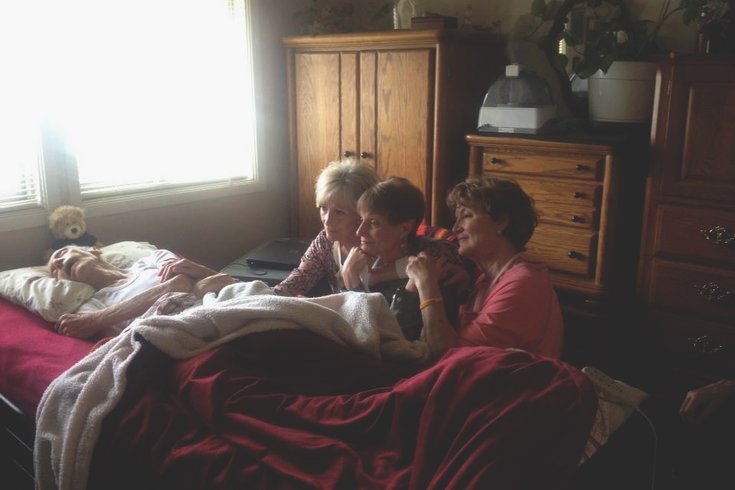
The last time I saw my grandfather, he was 95 years old. He walked with a bent back. Kindness graced his watery eyes.
During dinner, he asked me how old my son was at least four times.
“Is he 2?” he inquired once again.
“Almost. He’s 21 months, Grandpa,” I answered.
He smiled and returned to eating his tilapia, mashed potatoes and squash.
At the end of our visit, I walked him to the car. As we approached the steps leading down to the garage, he mentioned his bad knee – an injury from the war.
“I can do it,” he said, gently refusing my hand. “Just one step at a time.”
As my uncle opened the car door, my grandpa suddenly stopped. He turned back to look at me. He kissed his hand and lifted it up in the air. I blew a kiss back to him. He “caught it,” then brought it to his cheek with a knowing smile.
The last time I saw my grandfather, he blew me a kiss. That is what I remember most.
I am a doula. I am also a hospital chaplain. In holding space for birthing and dying, I’ve come to see one thing clearly. Standing with an open heart in the presence of birth is very much like standing with an open heart in the presence of death.
The word “doula” translates from Greek to mean “woman servant.” Today, doulas are known best for accompanying laboring and/or postpartum women. Doulas offer emotional, mental, spiritual and physical support during the transition of opening to new life. According to a 2013 nationwide survey conducted by Listening to Mothers, around 6 percent of expectant couples in America hire a birth doula. This number is small, but it’s growing. In 2006, only 3 percent of birthing women had doula support.
The vast majority of American women give birth in a hospital. Given this, the compassionate and consistent presence of a doula offers a healing tonic in an impersonal and medicalized obstetrical setting. Doulas focus solely on providing comfort measures, based on best practices, to ease the pain of labor and steady the heart and mind of a birthing woman. As a doula, I offer support for hours on end. I do my best to mirror back to a woman her courage, beauty and strength. Doulas believe in the power of birth and regard the process of birth as sacred.
What happens when we take the doula model described above and apply it to end-of-life care? What if we doula the dying?
Like with birth, the majority of Americans die in a hospital. While the majority of us wish to die at home, according to the National Center for Health Statistics, only 27 percent of Americans do. Most of us are born and die surrounded by medical professionals and beeping machines. Ideally, the technology associated with important medical advancements doesn’t eclipse the perennial needs of the human heart. Women birth best when they feel safe, are supported, and their bodies are allowed to open with organic wisdom. In the same way, the dying are best comforted with human touch, love, story and song.
In 2003, Henry Fersko-Weiss, a licensed clinical social worker, created the first end-of-life doula program in the U.S. He saw that there was “a gap” that hospice and medical professionals couldn’t fill when it came to supporting the dying and the bereaved. He trained with Debra Pascali-Bonaro, creator and director of Orgasmic Birth and chair of the International MotherBaby Childbirth Organization. Fersko-Weiss transferred knowledge gained about birth doula work to caring for the dying. As president of the International End of Life Doula Association (INELDA), he trains hundreds of individuals, drawing upon his studies of the intersectionality of birth and death work. Today, a small but growing number of organizations wisely build upon the doula model and offer training to support the dying and bereaved.
Fersko-Weiss is unique. Few end-of-life care professionals are trained in birth work. Few birth workers are trained in caring for the dying. Yet, uncanny similarities in best practices exist across these professions. At the October 2014 Midwives Alliance of North America annual conference, I spoke about the overlapping skill set taught in both my training as birth doula and hospital chaplain.There is much to be gained from studying what it means to hold space for both birth and death.
“That sure looks like my brother Darcey,” my grandpa said a few days before he died. His eyes gazed across his room. Then, he added, “Hi Mom. Will you stay close to me today?”
Will you stay close to me today?
When the veil between our visual world and the wonders beyond the physical senses thins, we seek out the hands of loved ones. Whether a mother holds these hands as she bears down to push a beloved child into our world, or whether an elderly woman holds the hands of her children as she breathes her last breath — we reach for each other. We do.
Wisdom and insight are born when we stay close to the birthing and dying. Wounds from the past can be healed. Forgiveness and perspective dawn. Our culture is currently fragmented from much of this wisdom. The training of doulas represents a healing shift. By holding compassionate and nonjudgmental space, doulas support families as they make room for the generations to enter and exit this world. As we attend to birth and death, we touch upon a great mystery and deeply benefit from being starkly reminded of our own mortality.
During my grandfather’s final days, his grandchildren and great-grandchildren came to his bedside. While he received quality and attentive hospice support, it was the consistent and compassionate care of his seven children that mattered most. In particular, my Aunt Colleen’s remarkable devotion to her father made it possible for him to live out his final years and eventually take his final breath in the comfort of his own home. She was his doula.
While the birth/postpartum doula movement makes important inroads in our maternity care system, great commitment and insight are needed to bring doula care to the dying. The elderly are easily disregarded in a culture that worships youthfulness, independence and productivity. Like infants, the dying remind us of our fragility, our dependency and our need for each other. When we sequester either birth or death, we lose touch with the truth of our interdependence, the nesting of generations, and what Buddhist teacher Thich Nhat Hanh calls our “interbeing.”
As I work to train death doulas, hold space for the birthing and meditate on the mysteries that connect the threshold points of life, I remember my grandfather’s words: “Just one step at a time.” Yes. Just one birth, one death, one step at a time.
Slowly, steadily, the doula movement brings needed healing to how we perceive and experience both birth and death. Holding compassionate presence in our most fragile moments reminds us of what matters most. Certainly, it’s not what we possess. Even the location of birth or death is secondary. It’s the presence of love and the gentleness we bring to our mortal journey that matter most.
The last time I saw my grandfather, he blew me a kiss. I hold it close to my cheek. It inspires me to do this work.
Complete Article HERE!
By Andrew Welsh-huggins
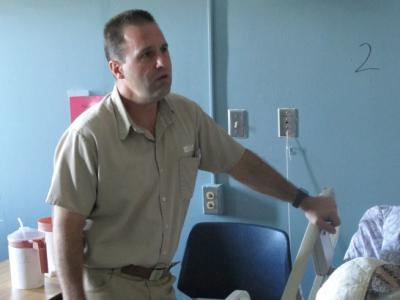
As late-morning sun streams through narrow prison windows, convicted killer Scott Abram stands beside a fellow inmate, speaks quietly to him and starts singing “Amazing Grace.” The prisoner appears to smile, but it’s difficult to gauge his response. He is dying.
He passes away two days later in early September.
Abram is a counselor trained in a national ministry program who sees his volunteer work as part of his own growth. Behind bars since the early 1990s for murder, he has gotten used to spending time with male prison friends as they die in rooms 205 or 206 on the second floor of the state’s prison for chronically ill inmates.
“We’re all human, and we make mistakes,” said Abram, sentenced to 15 years to life. “There are some that make bigger mistakes, like me. I make a lot of mistakes each day.”
Abram, 48, is a Stephen Minister, a type of lay counselor common in churches around the country but rarer inside prison walls. He is one of 15 male and female inmates trained in the program at Franklin Medical Center, a small prison just south of downtown Columbus that houses some of the state’s sickest inmates, many of whom die there.
Abram’s hospice work is just part of his Stephen Minister counseling. He and others also work with troubled inmates, perhaps helping them write a letter or make a call.
In Ohio and nationally, the inmate population is graying. Ohio had 8,558 inmates over 50 this year, nearly double the number in 2001. Other states, including Louisiana, Iowa and California, have similar prison programs.
Prisoner Sheila Belknap says her participation also makes her think about her own mistakes. Belknap, 42, plans to continue hospice work after she is released next year from a four-year term for theft charges. She calls her work with the dying a privilege.

“It’s just the satisfaction I get just from being there at the time of need,” she said. “No one wants to pass alone.”
Nos. 205 and 206 — there is also a room in another unit for female patients — resemble ordinary hospital rooms. Hanging wall quilts made by volunteers soften the institutional feel. Abram and Belknap are often joined by members of a Columbus choir that sings to hospice patients around central Ohio.
The Department of Rehabilitation and Correction hopes to expand the number of Stephen Ministers at other prisons, though hospice care would remain in the Columbus facility.
On average, an Ohio inmate dies of natural causes every three and a half days, not unexpected with a statewide prisoner population of 50,000, the size of a small city.
The national Stephen Ministry office in St. Louis is unaware of other state prisons with inmates trained in their counseling program.
Louisiana began an inmate hospice program in 1997 at the state penitentiary in Angola and developed a 40-hour training program for offenders, who volunteer for four-hour shifts with dying prisoners. California says it established the nation’s first inmate hospice at the California Medical Facility in Vacaville in 1993.
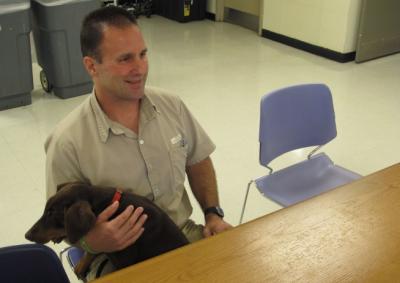
The program at the Iowa State Penitentiary in Fort Madison, Iowa, was the subject of “Prison Terminal: The Last Days of Private Jack Hall,” a documentary by filmmaker Edgar Barens that received a 2014 Academy Award nomination.
“It not only helps the prisoner who’s dying of a terminal illness, but it’s so redemptive for prisoners who go through the process of becoming hospice workers,” said Barens, a visiting media specialist at the University of Illinois at Chicago. “It’s tenfold payback when a prison does this.”
Complete Article HERE!
By Josh Sanburn
California Gov. Jerry Brown signed legislation Monday allowing doctors to prescribe life-ending medication to dying patients, making the state the fifth to legalize the practice and the first since the death of Brittany Maynard, whose decision to leave the state to end her life last year lent new urgency to the right-to-die movement.
Brown, a Catholic who at one point considered joining the priesthood, said in a statement that the religious objections to the bill were not enough to convince him to veto it.
“In the end, I was left to reflect on what I would want in the face of my own death,” Brown said in a statement explaining his decision. “I do not know what I would do if I were dying in prolonged and excruciating pain. I am certain, however, that it would be a comfort to be able to consider the options afforded by this bill.”
Right-to-die supporters have been working to legalize the practice in California for almost two decades. The movement gained significant momentum last year when Brittany Maynard, a 29-year-old newlywed, was diagnosed with terminal brain cancer and left California for Oregon to take advantage of the state’s Death With Dignity law, which went into effect in 1997. Since Maynard’s death, half of all U.S. states have introduced aid-in-dying legislation.
“This is the biggest victory for the death-with-dignity movement since Oregon passed the nation’s first law two decades ago,” said Barbara Coombs Lee, president of Compassion & Choices, a right-to-die advocacy group, in a statement.
Polls showed that three-fourths of Californians supported the measure, but legislators routinely ran into opposition from disability rights advocates who say the practice can open the door to abuses of the elderly and disabled, as well as the Catholic Church, which says only God should decide when people should die.
The law allows doctors to prescribe life-ending medication to patients who have been given six months or less to live. It requires two doctors to consent to the prescription as well as written requests from the patient for the medication. California joins Oregon, Washington, Vermont and Montana, which also allow the practice.
Complete Article HERE!
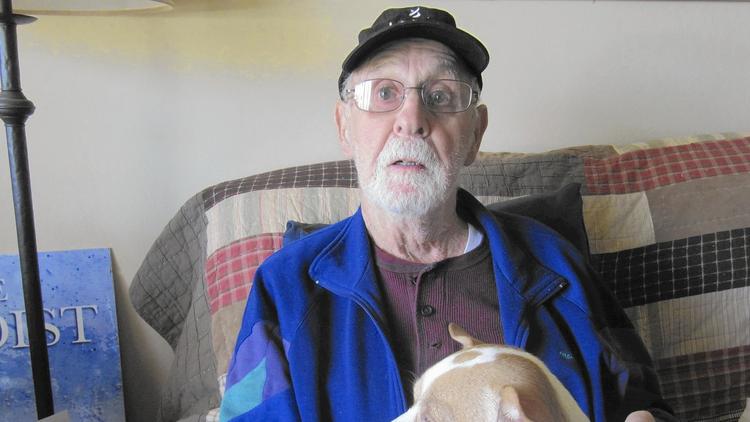
By Steve Lopez
Dear Gov. Brown:
Three years ago, my father died in a fairly typical manner. His heart and his body had given out, he could barely move, he couldn’t feed himself and he was in diapers.
He was in a bit of pain, but the physical suffering was nothing compared to the emotional and psychological side of things. His life was gone and there was no joy in a day. He had no privacy and he hated having to be cared for as he lay in bed helplessly, a witness to his own lingering death, which finally arrived as a friend might, delivering the gift of mercy.
Maybe I’m not as brave as my father, but I knew then that I do not want to die that way and wouldn’t want my loved ones to experience the misery of watching me slowly dissolve.
In some circumstances, death may be the best remaining friend and it is reasonable and moral to accelerate the dying process.– Dan Maguire, professor, Marquette University
So what will I do? I don’t know. I wouldn’t be one to put a gun to my head, as some do. Maybe I’d stop eating and drinking water, but that can be a pretty miserable way to go too.
Gov. Brown, I don’t know if you read about this in my column, but I died once. Just after a knee operation, I went into cardiac arrest and flat-lined. That wouldn’t be a bad way to go, actually. No long, drawn-out affair. No messy stuff. But I was resuscitated, and I’m alive and well for the time being, and I’m asking you to give dying Californians the right to depart on their own terms.
No one seems to know what you will do with the End of Life Option Act that’s in your hands and would give us the same freedom people have in Oregon, Washington and elsewhere.
I know that our democracy is based on a separation of church and state, and that leaders such as you try not to let the tenets of their faith assert undue influence on secular decisions. I know too, however, that our values are usually set early and that religious beliefs are often core to who we are.
So it seems reasonable to note that the Catholic Church opposes what critics call assisted suicide and supporters call aid in dying, yet polls suggest most Catholics — as well as most Californians — want the option of going through a series of steps to get a life-ending prescription from a physician.
I know, governor, that you got a little farther than I did in the Catholic Church. You were a seminarian and I topped out at altar boy.
I don’t know if you still identify as a Catholic, but to me, any religion is about a search for meaning and we all know you’re a thoughtful — even spiritual — man who reflects, quotes Scripture and works from a set of basic moral principles.
So I wanted to share some conversations I’ve had with religious people who came to support aid in dying in the context of their experience and training.
“As a Christian I believe God is love,” the Rev. Ignacio Castuera once told me. “…And the God of love would not want any of God’s creatures to suffer undignified situations, especially at the end of life.”
Castuera grew up Catholic and is now a United Methodist Minister in Pomona. He told me about his ministry in West Hollywood during the AIDS epidemic, and he spoke of the honor of being with those who found a way to purchase life-ending medications and face death bravely with loved ones present.
“Death,” Castuera said, “is not the final stage for humans.” It is, in his mind, a deliverance to God.
The Rev. Sergio Camacho, a Methodist minister in Montclair, shares that view.
“Over the years, I’ve seen so many people dying, from brain tumors and other diseases,” he said. “It’s unbelievable how they suffer.… Before they go, they curse their families, they curse themselves, they curse God. It’s horrible, and God doesn’t want that. He wants us to go in peace. We need to think about this with merciful hearts.”
Dr. Robert Olvera, a Catholic physician and former altar boy who grew up in East Los Angeles, has supported aid in dying since watching his daughter die, at 24, from the leukemia she lived with for 17 years. She was blinded by her disease, he said, painkillers offered no relief and she suffered greatly.
“She was basically living in a black hole,” he said. “She had no quality of life.”
She was wasting away, her face was sunken, she did not want to be seen by anyone and she was in that state for the final three months of a life that ended last year.
“She begged me to give her some sleeping pills,” said Olvera, who couldn’t answer that request, knowing he could be criminally charged and lose his license to practice medicine.
Doctors can and do offer palliative sedation, but Olvera believes they should also have the right to grant a terminal patient’s wish to die at the time of their choosing, provided they are of sound mind and have satisfied the safeguards against abuse or coercion that are written into the end-of-life legislation.
I asked Olvera how he would respond to the argument that the timing of death is not something patients and doctors should decide; that should be left in God’s hands.
Doctors, he said, can unplug ventilators and they can answer a patient’s wish to be taken off dialysis. They can recognize that modern medicine has advanced to the point where people can be kept alive almost indefinitely, but all of us must ask whether, in some cases, we are extending life or prolonging death.
As both a physician and a Catholic, Olvera said, he believes no one should have to experience what his daughter did.
I understand that your education was Jesuit, Gov. Brown.
Well, Dan Maguire studied in Rome, became a Jesuit priest and now teaches moral theology at Marquette University, a Jesuit school. Here’s what he told me:
“For almost 50 years a number of Catholic theologians have taught that for the terminally ill, ending life may, at times, be the best that life offers. In some circumstances, death may be the best remaining friend and it is reasonable and moral to accelerate the dying process.”
According to Scripture, Maguire told me, we are made in the image and likeness of God, and it is our God-given right to decide for ourselves on matters such as aid in dying.
“Thomas Aquinas says with great wisdom that human actions are good or bad depending on the circumstances,” Maguire said. “In certain cases, you could say that life is good, and always to be served as best you can, but there are times when the ending of life is the best that life offers, and moral beings can make that decision for themselves…. That’s what human freedom means.”
It’s true, Gov. Brown, that some fear the life-ending option will be abused, and that those who are disabled or in a state of depression will choose inappropriately or be manipulated by relatives who stand to benefit financially.
It’s true, as well, that we need to be mindful of the potentially dangerous intersection of end-of-life options and cost-cutting by health insurance companies that have a financial disincentive in costly end-of-life procedures going on for long.
But I believe the legislation before you offers safeguards against abuses.
I don’t know if my father — who refused a feeding tube before his life came to a close — would have taken advantage of the End of Life Option Act, had it been available at the time.
I’m certain many people — probably most people — would want no part of it. That’s their choice and they should be entitled to the finest palliative care.
But I know that since writing about his death, I have heard from hundreds of Californians who would take a small measure of comfort in knowing that if they so choose, they can avoid physical or emotional suffering as the inevitable end nears. They believe that, as Dan Maguire put it, there comes a time when death is a friend.
I stand with them.
Complete Article HERE!